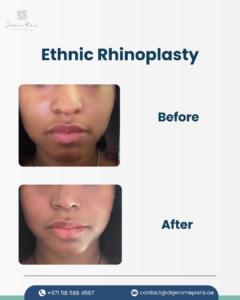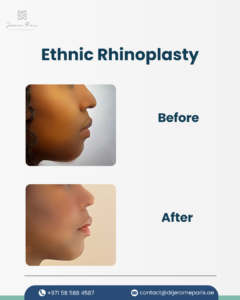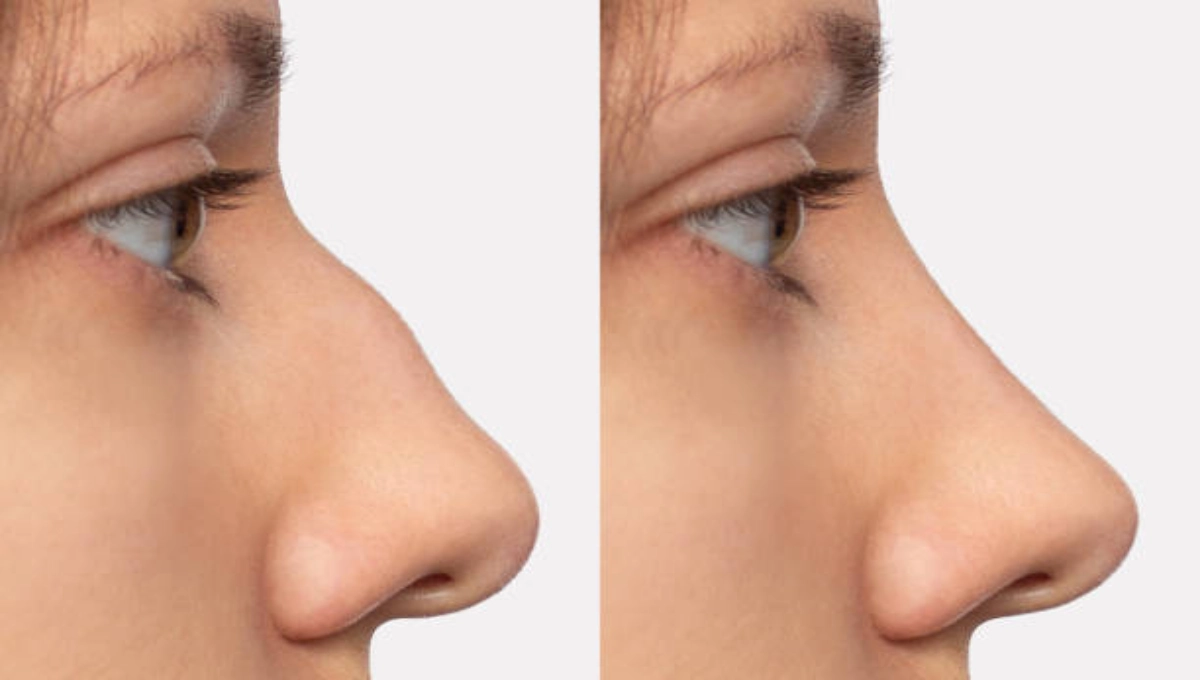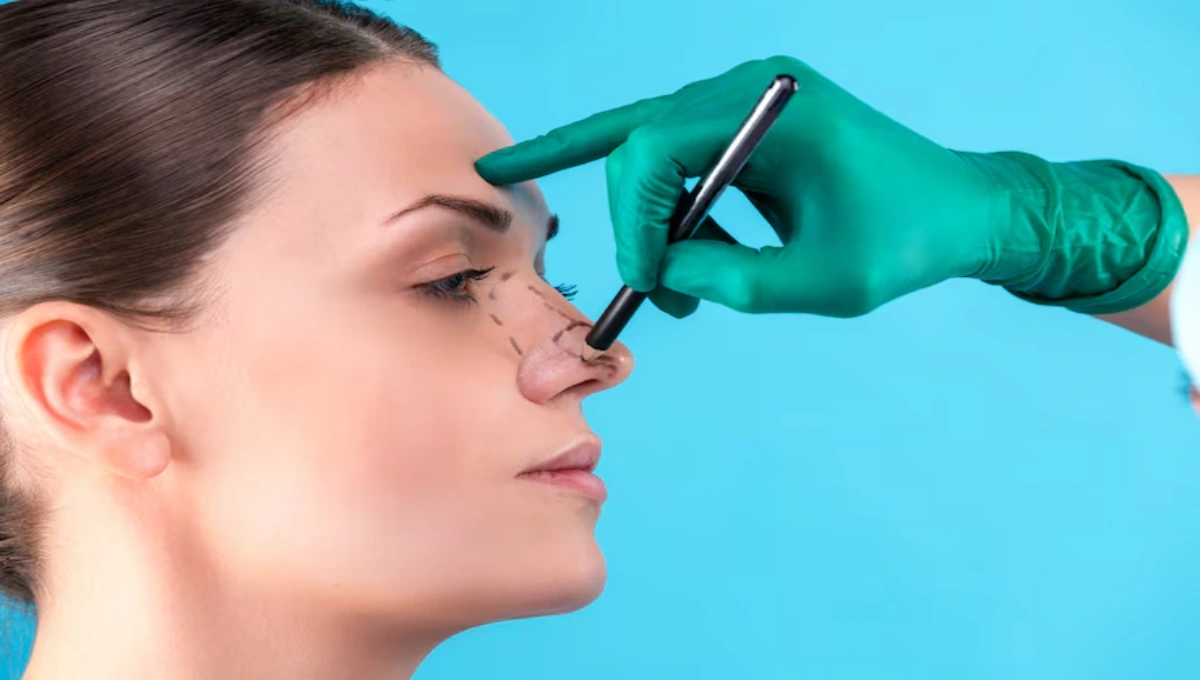Rhinoplasty is a popular cosmetic procedure known for enhancing the appearance of the nose, but when it comes to ethnic rhinoplasty, the approach requires a deeper understanding of the patient’s unique features and cultural background. Ethnic rhinoplasty, a term that refers to rhinoplasty specifically designed to preserve the distinct characteristics of a person’s ethnic heritage, is gaining increasing attention as people seek surgeries that align with their natural facial features. Unlike traditional aesthetic rhinoplasty, which often aims for a generic “ideal” nose, ethnic rhinoplasty focuses on enhancing the nose while maintaining the balance and harmony specific to the individual’s ethnic identity.
This article will explore what ethnic rhinoplasty is, why it’s important to preserve ethnic features during the procedure, and how it can provide both functional and aesthetic benefits for patients from diverse backgrounds.
What Is Ethnic Rhinoplasty?
Ethnic rhinoplasty is a tailored surgical approach to nose surgery that aims to enhance the appearance of the nose while respecting and maintaining a patient’s ethnic features. The procedure may involve modifying the shape, size, or structure of the nose to improve facial harmony, but it is designed in such a way that the results still reflect the unique characteristics of the patient’s ethnicity.

While traditional rhinoplasty often focuses on achieving a standard, idealised nose, ethnic rhinoplasty recognises that beauty is subjective and culturally specific. In many cases, patients with distinct ethnic backgrounds, such as African, Asian, Middle Eastern, or Hispanic descent, may have unique nasal structures. Ethnic rhinoplasty takes these variations into account, allowing for the enhancement of the nose without compromising the patient’s natural appearance or ethnic identity.
Why Is Ethnic Rhinoplasty Important?
Every ethnicity has its own set of distinctive features that make individuals stand out, and the nose is no exception. Different ethnic groups tend to have different nose shapes, sizes, and structural characteristics, such as a wider or flatter bridge, a more pronounced tip, or different nostril shapes. Ethnic rhinoplasty is about preserving these important features while still achieving aesthetic improvements.
Ethnic rhinoplasty allows individuals to enhance their facial appearance without erasing the characteristics that make them who they are. It is a highly customised procedure that considers the patient’s ethnic background, ensuring that the new nose complements their overall facial features and remains in harmony with their ethnicity.
Rhinoplasty for Ethnic Features: Customised Approach
When it comes to rhinoplasty for ethnic features, one size does not fit all. Different ethnic groups have varied nasal structures, and it is essential to design the procedure to suit each patient’s unique characteristics. For example:
- African American Rhinoplasty: Many individuals of African descent have broader or flatter noses, with a lower nasal bridge and wider nostrils. In these cases, ethnic rhinoplasty might involve narrowing the nostrils or elevating the nasal bridge while maintaining the natural proportions and not altering the shape excessively.
- Asian Rhinoplasty: People of Asian descent often have a low nasal bridge and a rounded tip. For these patients, ethnic rhinoplasty might focus on building up the nasal bridge using cartilage grafts or implants, giving the nose more definition while preserving a natural and harmonious look.
- Middle Eastern Rhinoplasty: Individuals of Middle Eastern descent often have pronounced nasal features, including a strong nasal bridge or a more prominent hump. Ethnic rhinoplasty in this context could involve smoothing out the hump or refining the tip, but in a way that keeps the strong facial features intact.
- Hispanic Rhinoplasty: Patients of Hispanic descent may have thicker skin and different cartilage structures. In these cases, ethnic rhinoplasty may focus on refining the nasal tip or reshaping the nostrils, paying attention to preserving the strength of the nose while enhancing its appearance.
No matter the ethnicity, the goal of ethnic rhinoplasty is to provide an outcome that enhances natural beauty without altering the essential features that make someone’s face unique. The results are carefully crafted to ensure that the nose fits the patient’s overall facial proportions and ethnic identity.
How Is Ethnic Rhinoplasty Different from Traditional Rhinoplasty?
Traditional rhinoplasty typically aims to create a “universal” aesthetic that is seen as beautiful by Western standards, often resulting in a smaller, more refined nose. However, this approach does not always suit every individual, especially those with diverse ethnic backgrounds.

Ethnic rhinoplasty, on the other hand, avoids a cookie-cutter approach. It is a personalised, culturally sensitive procedure that takes into account the patient’s facial structure, skin thickness, and the natural look of their nose. The goal is to refine and enhance the nose while keeping the person’s ethnic features intact. The surgeon will consider factors such as:
- The width of the nasal base
- The length and shape of the nose
- The prominence of the nasal bridge
- The shape and positioning of the nostrils
- The overall harmony between the nose and the other facial features
Ethnic rhinoplasty also often requires a more nuanced approach, as it may involve the use of cartilage grafts or implants to augment certain areas of the nose, such as the bridge or tip, without creating a result that looks out of place.
Aesthetic Rhinoplasty: Balancing Beauty and Identity
Aesthetic rhinoplasty, in the context of ethnic rhinoplasty, is about balancing beauty with personal and cultural identity. The procedure should enhance the features of the nose without disrupting the balance of the face. Each person’s unique ethnic background is celebrated, and the goal is to improve the nose in a way that maintains its natural beauty, creating an outcome that aligns with the person’s vision while still honouring their heritage.
For example, a patient seeking rhinoplasty to enhance the profile of their nose might want a more defined nasal bridge or a more sculpted tip. However, the goal is not to drastically change the overall structure of the nose, but to improve the symmetry and proportion of the nose in relation to the rest of the facial features.
It’s crucial that patients have a clear discussion with their surgeon about the results they desire, as well as the features they want to preserve. This helps to ensure that the outcome is both aesthetically pleasing and culturally appropriate, avoiding over-correction and achieving a result that feels like a natural extension of the patient’s face.
The Benefits of Ethnic Rhinoplasty
1. Enhanced Facial Proportions
Ethnic rhinoplasty can help create a more balanced and harmonious look by refining the nose in proportion to other facial features. It enhances the overall appearance of the face, whether it’s by augmenting a flat nasal bridge, narrowing wide nostrils, or refining the nasal tip.
2. Preserving Cultural Identity
One of the key benefits of ethnic rhinoplasty is the preservation of ethnic features. The procedure enhances the nose in a way that respects the patient’s cultural background, helping them achieve their aesthetic goals without losing their natural ethnic identity.
3. Boosting Confidence
When the nose is in better proportion to the rest of the face, it can boost self-esteem and confidence. Patients who feel self-conscious about their noses may find that ethnic rhinoplasty offers a significant improvement in their appearance, helping them feel more comfortable and confident in their own skin.
4. Functional Improvements
In many cases, ethnic rhinoplasty is not just about aesthetics—it can also improve the function of the nose. For individuals with breathing difficulties caused by a deviated septum or other structural issues, ethnic rhinoplasty can address these concerns, enhancing airflow and making it easier to breathe through the nose.
Choosing the Right Surgeon for Ethnic Rhinoplasty
Ethnic rhinoplasty requires an experienced, skilled surgeon who understands the nuances of different ethnic features and can customise the procedure to meet the patient’s individual needs. Look for a surgeon who has experience working with patients from diverse backgrounds and who can provide examples of past ethnic rhinoplasty cases.
During the consultation, the surgeon should take time to understand your aesthetic goals and explain the process in detail. They should also be able to provide you with realistic expectations of the results and discuss any potential risks or complications associated with the procedure.
Conclusion
Ethnic rhinoplasty is a specialised procedure designed to enhance the nose while preserving the natural features that reflect an individual’s ethnic background. Whether it’s reshaping the nasal bridge, refining the nostrils, or enhancing the nasal tip, ethnic rhinoplasty aims to create results that are in harmony with the patient’s facial structure and cultural identity.
If you are considering ethnic rhinoplasty in Dubai and would like to learn more about how the procedure can enhance both your appearance and function, Dr. Jerome Paris is here to guide you through every step of the process. With years of experience in facial plastic surgery, Dr. Paris offers tailored solutions that respect and enhance your natural features. Contact us at +971 58 588 4587 or visit our clinic in Dubai for a consultation.
Take the first step towards achieving the perfect balance between beauty and identity with ethnic rhinoplasty today!





